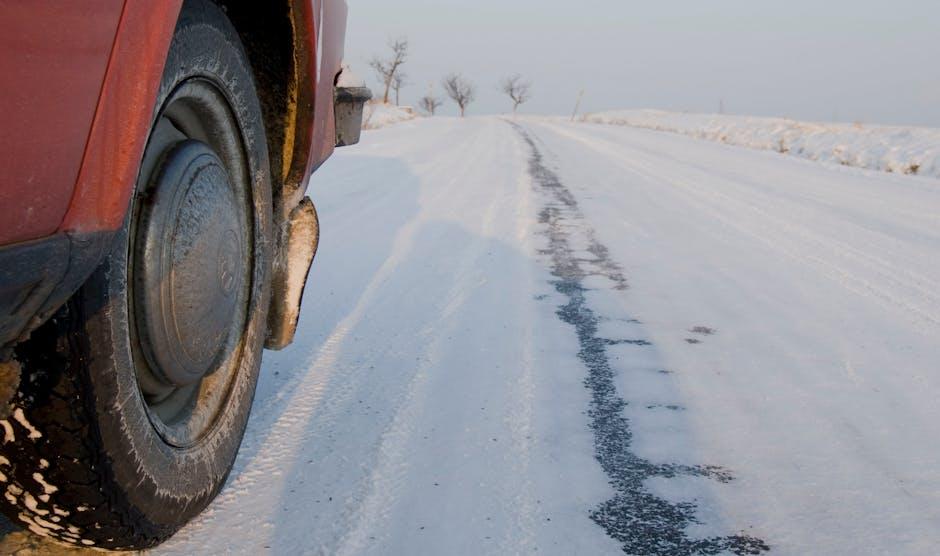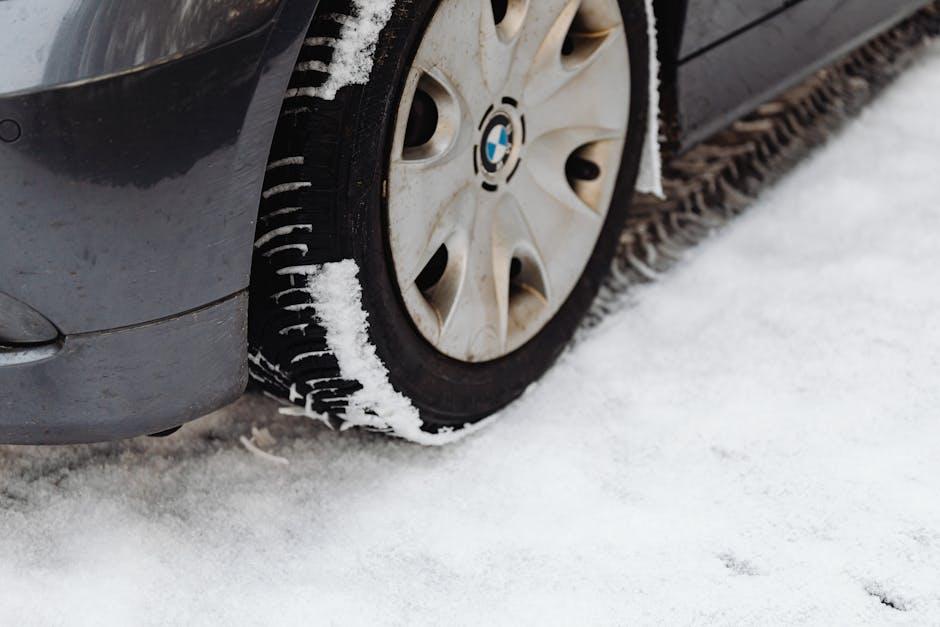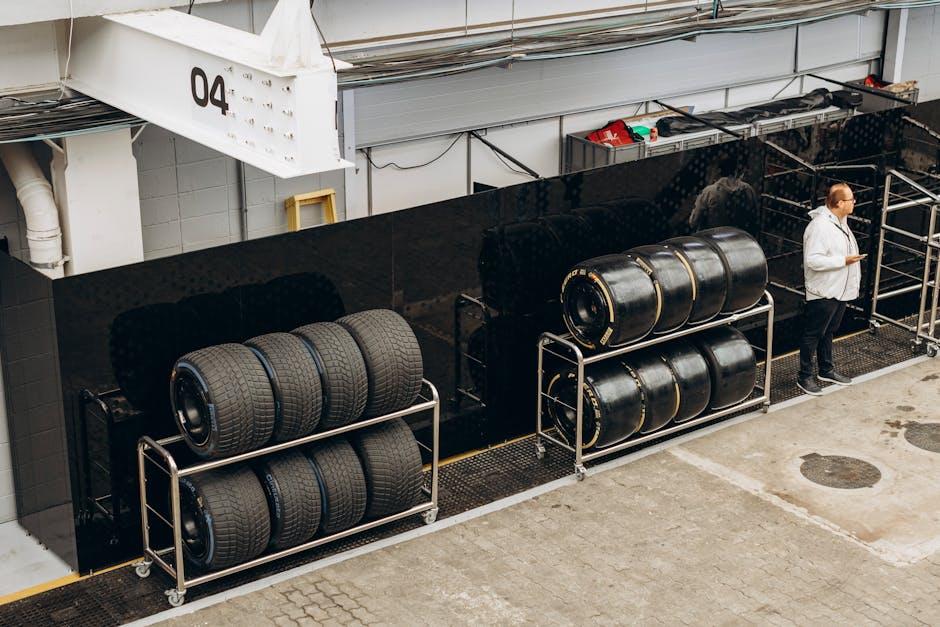As the seasons change, so too does the need to switch out our tires—trading in the summer set for winter’s grip, or vice versa. But once the tires come off, how we store them can greatly impact their performance and longevity come next season. Proper storage isn’t just a matter of tidiness; it’s a critical step that preserves safety, extends tire life, and saves money in the long run. In this article, we’ll explore the best practices for storing seasonal tires, ensuring that when the time comes to mount them again, they’re ready to roll smoothly and safely.
Table of Contents
- Choosing the Ideal Storage Environment for Seasonal Tires
- Preparing Tires for Long-Term Storage with Proper Cleaning and Inspection
- Optimal Tire Positioning Techniques to Prevent Deformation
- Using Protective Covers and Containers to Guard Against Damage
- Maintaining Tire Pressure and Monitoring for Wear During Storage
- Seasonal Tire Storage Safety Tips to Extend Lifespan and Performance
- Q&A
- In Summary

Choosing the Ideal Storage Environment for Seasonal Tires
To ensure your seasonal tires remain in peak condition, it’s crucial to select a storage environment that shields them from harmful elements. Tires thrive best in a cool, dry, and dark space, where temperature fluctuations are minimal. Avoid areas like garages adjacent to furnaces or dryers, as the excess heat and humidity can degrade the rubber compounds. Instead, opt for climate-controlled rooms or basements that offer stable conditions year-round, protecting your tires from premature aging caused by UV exposure and moisture.
When arranging the storage area, keep in mind the following key factors:
- Cleanliness: Ensure the space is free from oil, grease, and chemicals that might deteriorate the tires.
- Ventilation: Proper airflow prevents mold and mildew buildup, which can weaken tire integrity.
- Off the floor: Store tires on pallets or shelves to avoid direct contact with cold, damp surfaces.
- Protection: Use tire covers or bags designed to block ozone and sunlight effectively.
| Storage Condition | Preferred Range |
|---|---|
| Temperature | 10°C – 25°C (50°F – 77°F) |
| Humidity | Below 50% |
| Light Exposure | Minimal to none |

Preparing Tires for Long-Term Storage with Proper Cleaning and Inspection
Before tucking away your seasonal tires, ensuring they are meticulously cleaned and inspected is essential to prolong their lifespan. Begin by washing off any dirt, salt, or brake dust using a mild soap and water solution. Be sure to rinse thoroughly and allow the tires to dry completely to avoid moisture buildup, which can lead to premature rubber degradation. Prioritize cleaning the sidewalls and tread grooves where debris often lodges. Once cleaned, perform a thorough visual check for any signs of cracks, bubbles, or uneven wear patterns that could indicate underlying damage or issues that need addressing before storage.
Inspection is not just about catching problems but also about documenting your tire’s condition. Keep a simple checklist with the following crucial points:
- Tread Depth: Verify that the tread depth meets or exceeds recommended limits.
- Sidewall Integrity: Look for cuts, bulges, or abrasions.
- Valve Caps: Ensure they are intact to prevent air leaks.
- Pressure: Inflate tires to slightly above recommended pressure to reduce deformation during rest.
| Inspection Point | What to Look For | Recommended Action |
|---|---|---|
| Tread Depth | Less than 4/32 inch | Consider replacement before storage |
| Sidewall Condition | Cracks or bulges | Consult professional inspection |
| Valve Caps | Missing or damaged | Replace to ensure airtight seal |
| Tire Pressure | Below recommended psi | Inflate slightly above recommended |

Optimal Tire Positioning Techniques to Prevent Deformation
To maintain the structural integrity of your tires during long periods of inactivity, it’s crucial to position them thoughtfully. Ideally, tires stored off the vehicle should be kept upright on a flat, stable surface. This orientation distributes the tire’s weight evenly, helping prevent flat spots and sidewall deformation. When stacking tires, avoid piling them more than four high to reduce excessive pressure that can cause misshaping. Additionally, rotating the tires’ position every month can alleviate stress points, ensuring consistent wear and prolonging their lifespan.
For tires mounted on rims, hanging them by hooks or storing them on specialized racks can preserve their roundness effectively. Make sure these storage solutions provide enough support and do not concentrate weight at a single point. Here’s a quick reference table summarizing optimal positioning methods for both mounted and unmounted tires:
| Tire Type | Recommended Position | Rotation Frequency |
|---|---|---|
| Unmounted | Stored upright, not stacked more than 4 high | Monthly |
| Mounted | Hanged by hook or on rim racks | Every 4-6 weeks |

Using Protective Covers and Containers to Guard Against Damage
Investing in high-quality protective covers and containers is a crucial step in preserving the integrity of your seasonal tires during extended storage periods. These covers act as a barrier against dust, dirt, and moisture, which can accelerate the degradation of rubber if left exposed. Opt for covers made from breathable materials to prevent condensation buildup, and look for those featuring UV protection to shield tires from harmful sunlight that may cause cracking. When combined with airtight containers, you can also guard against pests and other environmental hazards.
For optimal organization and convenience, consider using specialized storage boxes or crates that fit your tire size and shape securely. Beyond protection, these containers allow for easy stacking and space-saving in your garage or storage area. Below is a simple comparison table to help you choose the best option for tire protection:
| Storage Option | Protection Level | Breathability | Space Efficiency |
|---|---|---|---|
| Fabric Covers | High | Excellent | Moderate |
| Plastic Containers | Very High | Low | High |
| Mesh Bags | Medium | High | High |

Maintaining Tire Pressure and Monitoring for Wear During Storage
Properly maintaining tire pressure is crucial even when your seasonal tires are not in use. Tires naturally lose air over time, so it’s recommended to inflate them to the manufacturer’s recommended pressure before storage. This helps prevent flat spots and maintains the tire’s shape. If you are storing the tires on rims, roll them periodically to redistribute pressure and avoid excessive wear on specific areas. For tires off the rims, stack them horizontally in a cool, dry place and avoid placing heavy objects on top.
Regularly monitoring tire wear during storage can save you from unexpected issues when the season returns. Look out for signs such as cracking, bulging, or uneven tread wear, which may indicate underlying damage or degradation. To better organize your checks, use the following simple guide:
| Inspection Point | What to Look For | Suggested Action |
|---|---|---|
| Tread Depth | Minimum 4/32” for safe use | Replace if below minimum |
| Sidewall Condition | Cracks or bulges | Do not use; consult a professional |
| Air Pressure | Consistent with manufacturer specs | Reinflate as needed |
- Keep records: Track inspection dates and pressure readings to spot trends or deterioration quickly.
- Use protective covers: Shield tires from direct sunlight and dust to prolong their lifespan.

Seasonal Tire Storage Safety Tips to Extend Lifespan and Performance
Properly storing your seasonal tires can significantly prolong their life and maintain their performance. First, ensure each tire is thoroughly cleaned and completely dry before storage to prevent corrosion or mold buildup. Use airtight bags or tire storage covers labeled with the mounting position to avoid confusion during the next changeover. Keep tires away from direct sunlight, heat sources, and chemicals like solvents or fuels, which can degrade the rubber compound. Maintaining an optimal storage environment with cool, dry, and dark conditions will protect your tires from premature aging.
When organizing your tires, consider how they’re stored to minimize deformation. Tires without rims should be stored vertically to prevent warping, while tires mounted on rims can be stacked flat in small piles. Rotating the tires periodically during storage helps keep the shape intact. Below is a simple guide to storing different tire types safely:
| Storage Type | Recommended Position | Additional Tips |
|---|---|---|
| Unmounted Tires | Vertical | Store upright; rotate monthly |
| Mounted Tires | Stacked Horizontally | Limit stacks to 3-4 tires |
| All Tires | N/A | Keep in a cool, dry place away from sunlight |
Q&A
Q&A: Best Practices for Storing Seasonal Tires
Q1: Why is proper storage important for seasonal tires?
A1: Proper storage preserves tire integrity, prevents premature wear, and ensures safety when you reinstall them. Tires are exposed to elements and pressures that can degrade rubber compounds and cause deformation if not stored correctly.
Q2: When should I store my seasonal tires?
A2: Store your tires as soon as the driving season ends—winter tires right after spring arrives, and summer tires once autumn is here. This minimizes exposure to unsuitable conditions and maximizes their lifespan.
Q3: What’s the ideal location for tire storage?
A3: Choose a cool, dry, and dark place free from direct sunlight, heat sources, and ozone generators (like electric motors). Basements or climate-controlled garages are often perfect spots.
Q4: Should I clean my tires before storing them?
A4: Absolutely! Clean off dirt, brake dust, and road grime with mild soap and water. Removing contaminants prevents rubber degradation and helps you inspect tires for damage before storage.
Q5: Is it better to store tires mounted on rims or unmounted?
A5: Both methods work, but storing tires on rims is often easier and helps maintain shape. If storing unmounted, stack them flat to avoid deformation. Mounted tires should be hung or stood upright to prevent flat spots.
Q6: Can I stack all my tires on top of each other?
A6: If unmounted, stack tires no higher than four to five to prevent warping. Mounted tires are better stored vertically, side-by-side, to evenly distribute weight and maintain shape.
Q7: How can I prevent tire deformation during storage?
A7: Avoid pressure points and prolonged weight on one area. Rotate stacked tires occasionally and use proper racks or hangers when possible to maintain their roundness.
Q8: Is it advisable to use tire covers for storage?
A8: Yes, breathable tire covers protect from dust and light exposure while allowing moisture to escape. Avoid airtight plastic bags as trapped moisture can promote degradation.
Q9: How long can tires be stored safely?
A9: Ideally, store tires no longer than six months to a year. Over time, rubber hardens and cracks regardless of storage conditions, so monitor their condition regularly.
Q10: What should I inspect before reinstalling stored tires?
A10: Check tread depth, sidewall condition for cracks or bulges, and ensure no excessive wear or damage occurred. Proper inspection helps maintain safety and performance on the road.
By following these best practices, your seasonal tires will stay in peak condition, ready to hit the road when the seasons change again!
In Summary
As the seasons turn and your tires take their well-earned rest, remember that proper storage is more than just putting them away—it’s about preserving performance and safety for the miles ahead. By following these best practices, you ensure that when the time comes to switch back, your seasonal tires will be ready to grip the road with the same confidence as ever. Thoughtful care today means a smoother, safer drive tomorrow—because tires stored well are tires that perform well.


2 Comments
u3fela
u3fela